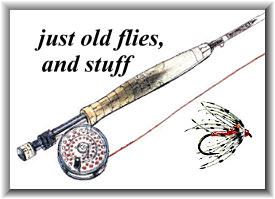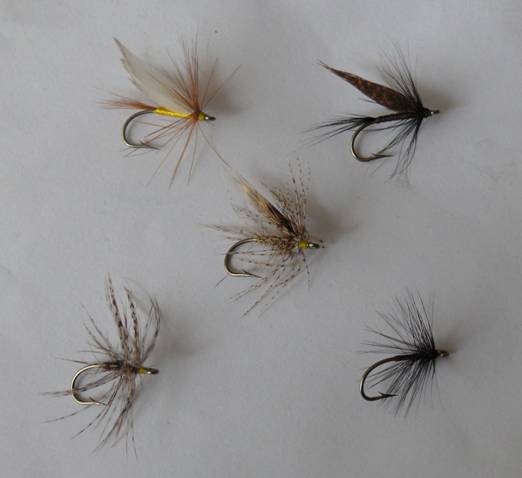
Welcome to 'just old flies,' a section of methods and flies that used-to-be. These flies were tied with the only materials available. Long before the advent of 'modern' tying materials, they were created and improved upon at a far slower pace than today's modern counterparts; limited by materials available and the tiers imagination.
Once long gone, there existed a 'fraternity' of anglers who felt an obligation to use only the 'standard' patterns of the day. We hope to bring a bit of nostalgia to these pages and to you. And sometimes what you find here will not always be about fishing. Perhaps you will enjoy them. Perhaps you will fish the flies. Perhaps?
CAPT. GD HAMILTON
Capt. GD Hamilton was one of the early British settlers who, in the late 1800s, stocked New Zealand Rivers with brown and rainbow trout. Capt. Hamilton originally hailed from the north of England, and wrote the first book on angling in New Zealand, of which I have a facsimile copy of his 1904 edition. It is entitled “Trout fishing and sport in Maoriland”. He felt, as do many still today, that fly selection was something that was made to be far more complicated than it is. To quote him, “The multiplication of the varieties of flies used is one of the ways of making a complicated business of what is really a simple matter.” Indeed, he was of the minimalist school of thought, similar to W.C. Stewart. The first half of the book covers angling (artificial fly, worm, grub, live insect, minnow, and par tail), deer stalking, and pig hunting, the latter half is a list of all the lakes, rivers, burns, and streams, in the North and South Island. These he covers in a brief, formulaic manner to provide the visitor some information on what to expect. With respect to fly fishing, the following 5 patterns are what he recommends.
Red Hackle (body yellow, tail and hackle natural red, wings: mallard)
Black Hackle( Body dark brown waxed, tail and hackle: black, wing Grouse)
Hare’s Ear and Partridge (body hare’s ear dubbing, tail and hackle brown partridge, wing, light woodcock, tied with yellow silk) – a March Brown variant
Hare’s Ear spider (body hare’s ear dubbing, partridge hackle palmered over ½ the body, tied with yellow silk)
Black Spider (Body dark brown, waxed, hackle black, palmered over ½ the body)

These 5 flies, in different sizes, were all he felt were necessary to take a limit of trout. He suggested that anglers too often attribute the change from poor to good sport to the use of a new fly, rather than to a change in the humour of the fish as they come on the feed. The Black Spider is clearly from Stewart’s book, and like Stewart, he recommends sparsely tied flies. The examples I’ve shown here are tied on size 8 Mustad 3366s, and these hooks match exactly the illustration in his book which he indicates are Pennell-eyed Limerick hooks, equal to No. 8 Dublin Limerick hooks in size. These were the largest recommended size, with the smallest being a size 11, although that range was for the “most useful”.
Funnily enough, the first trout I caught in New Zealand on a fly I tied was on a size 12 red hackle above with the inclusion of a copper wire rib. Since then, I’ve caught fish on pretty much all of these patterns, or ones close enough as to make no difference. I bet you could too!
Tight lines.
Jeff Hamm
[ HOME ]
[ Search ] [ Contact FAOL ] [ Media Kit ]